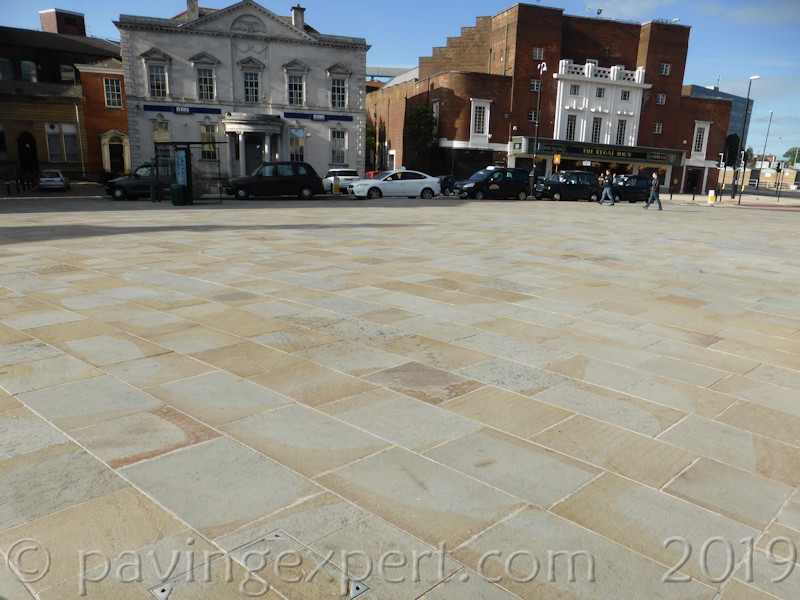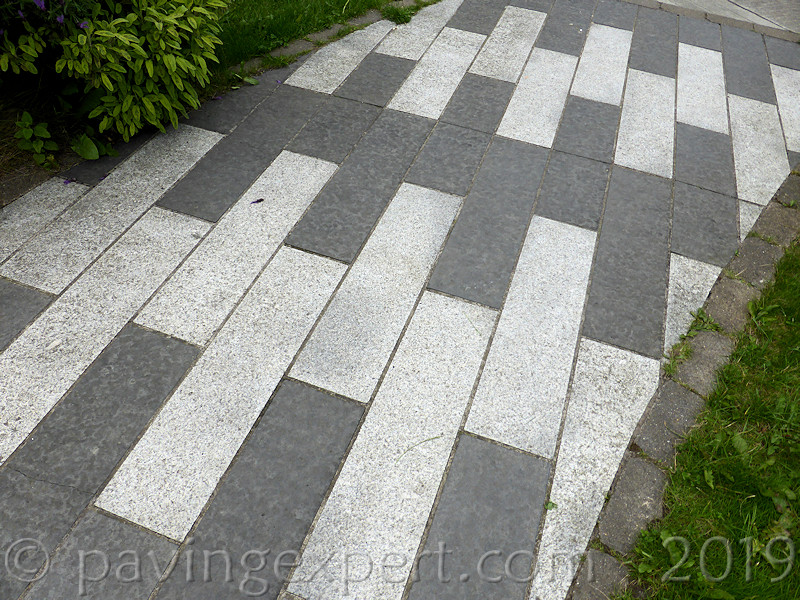Introduction:
There's no paving finer than natural stone; it's been used for thousands of years and represents one of man's earliest technologies - the ability to make a traversable pathway. It will outlast all of us, every unit is unique, it's a natural product with texture and colour determined by millennia of geological processes rather than modern chemical dyes, it's incredibly strong, hard-wearing and if all that wasn't enough, it's also beautiful.
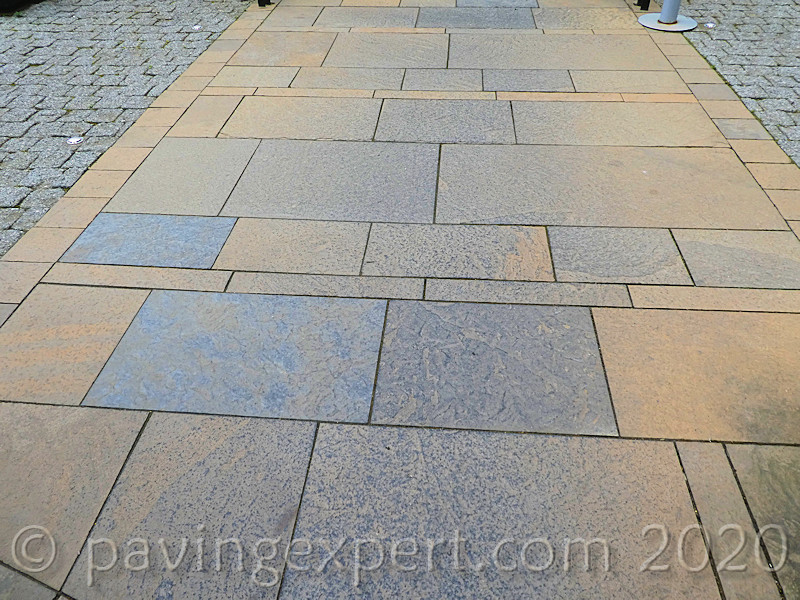
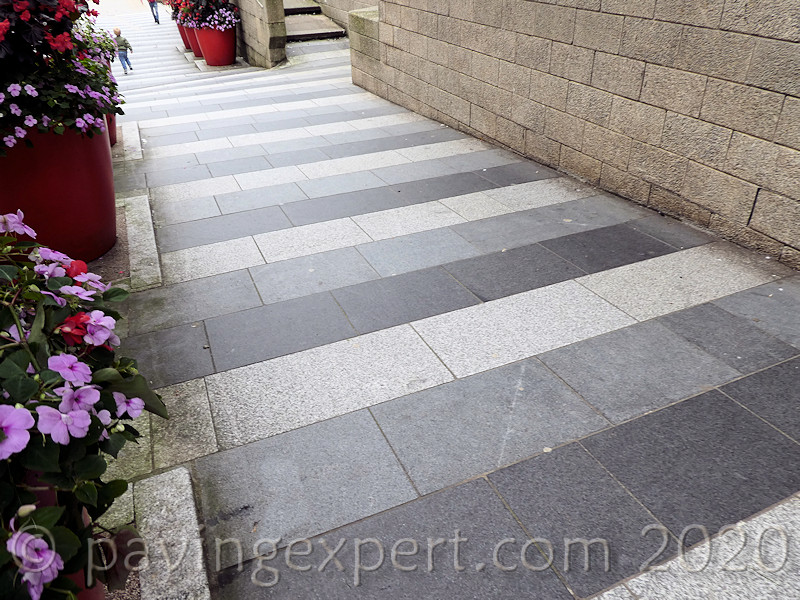
The stone paving most commonly used in mainland Britain is the legendary 'York' stone, hewn from the Pennine grits of northern England, and used to pave the streets of the capital, along with almost every other major town in the country up until the last century. But there are other stone products used for paving - Pennant from Gloucestershire, slate from Wales and Cornwall, Liscannor from Co. Clare, limestones from Derbyshire and North Yorkshire, granites from Shap and Aberdeen, basalts, whinstone and a host of other rock types, from each and every region of these islands.
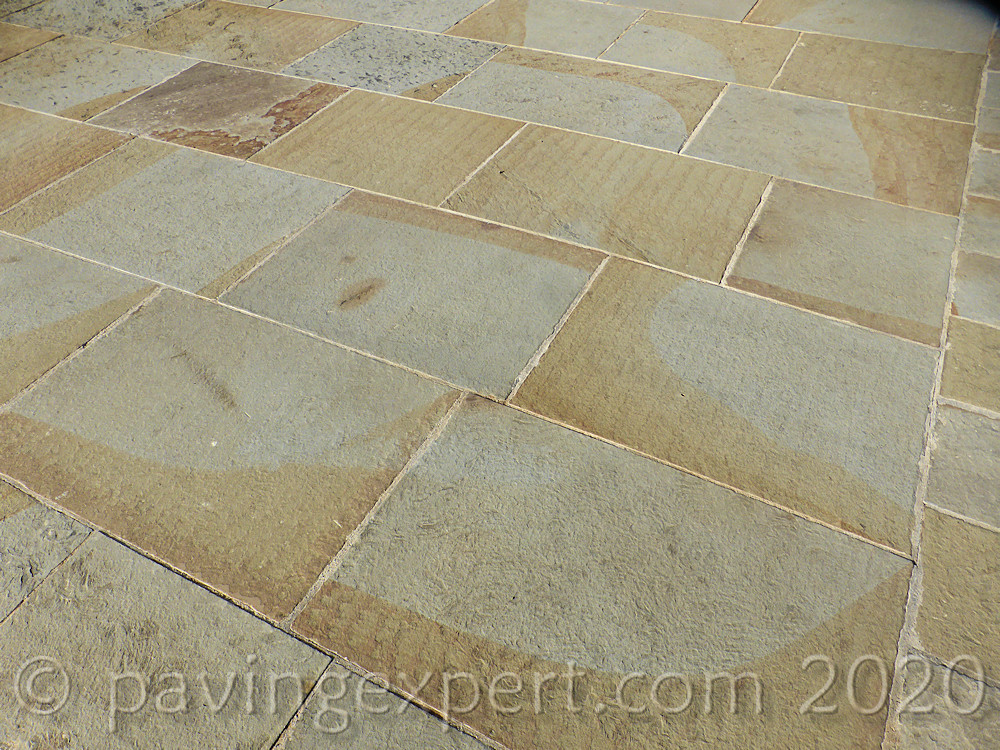

Increasingly though, we are seeing more and more stone imported from more exotic parts of the world. There is limestone from India and China, and there has been a huge surge in the supply of an Indian Sandstone that is similar in appearance to our own Yorkstone but sells for slightly less per square metre.
There are also granites from Brazil and China, marbles and slates from southern Europe, all supplied as what we would term 'flagstones', as well as cubes, setts and cobbles in hardstones such as gabbro and diorite.
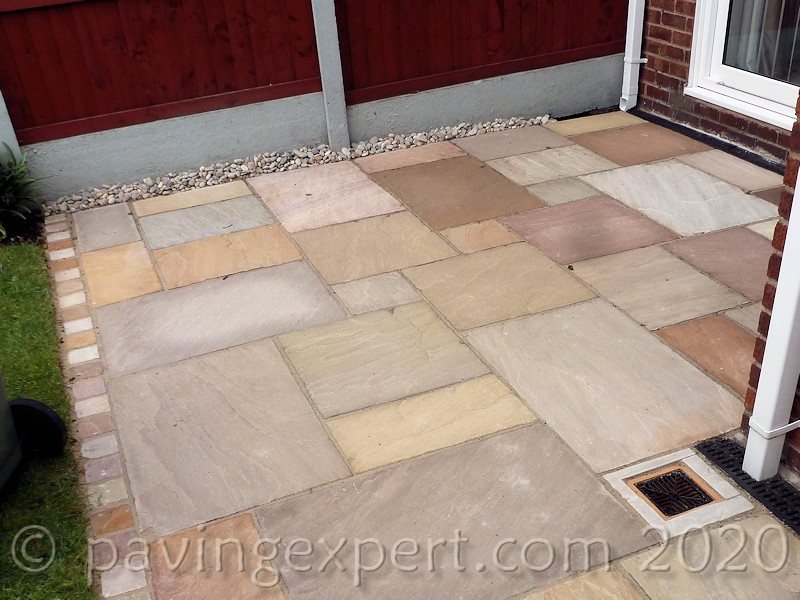
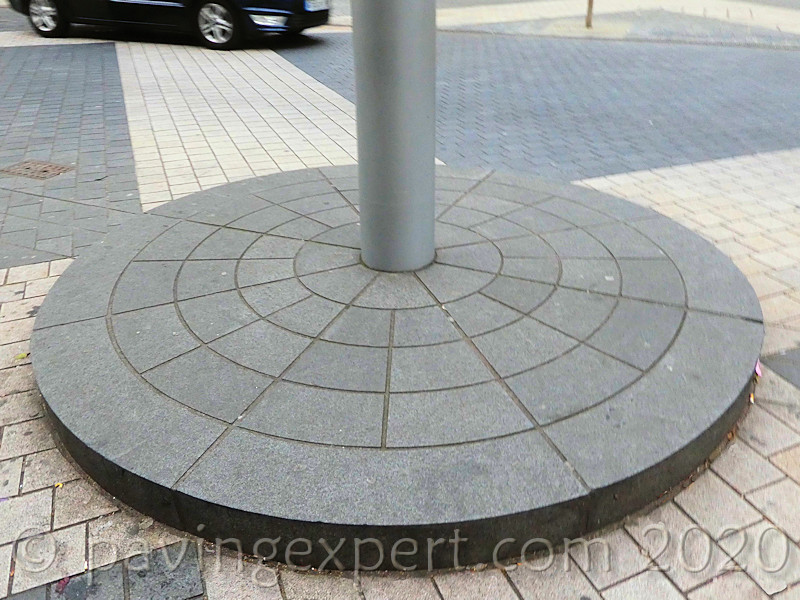
Amazingly powerful, modern machines with the latest diamond blade technology allow stone to be cut and dressed with a fraction of the effort required by the quarrymen and streetmasons of old, and there is now stone paving available to whatever plan size, thickness and finish is required. Stone can be custom cut to create fan radius details, cut to sizes to use with other manufactured paving units and given a wide range of special finishes.
All this comes at a cost, though. Stone paving is not particularly cheap when compared to the concrete alternatives, and even reclaimed stone paving has a healthy re-sale value. In fact, it is not unheard of for whole streets of stone paving to be 'stolen' by thieves masquerading as council operatives, and for private driveways and patios to be lifted and removed overnight.
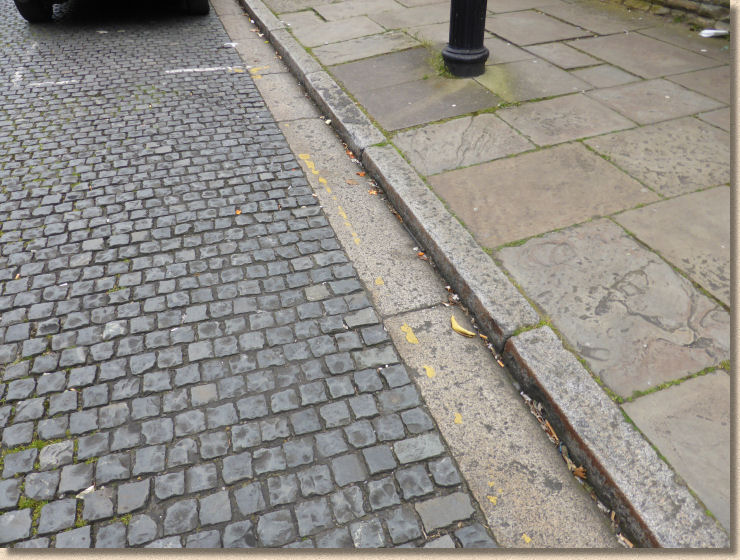

New or reclaimed?
Reclaimed stone flags, i.e. salvaged from old streets, yards or wherever, usually have more immediate character than newly cut flagstones, and are considerably cheaper. The newly cut flagstones will develop their own character over time, as they are weathered and worn, but they can look amazingly pristine when just laid. The reclaimed flagstones add instant charm to period properties, and look great in a garden setting, but they can look mis-matched when used for a driveway on newer, modern properties.
Both new and reclaimed stone flags are suitable for most applications. Any 'flag' thinner than 20-25mm is more a tile than a flag and should only be used in the least strenuous of applications, and then preferably on a full mortar bed, much as a tile is laid. The 25-60mm thick units are best suited for non-vehicular usage, such as paths and patios, the 50-75mm thick for heavier applications such as streetworks, while the 70-150mm thick units are typically reserved for paving that is likely to experience some low-speed vehicular traffic, such as commercial or civic projects and for residential driveways.
Buying New
With new paving, the supplier will normally offer a choice of thicknesses, and they will then be cut to suit the specification. There is also usually a choice between paving that is 'sawn 6 sides', 'sawn top and bottom', and 'natural cleft', but this depends on the type of stone from which the flags are cut and the individual supplier. Some quarries supply flagstones that are sawn on the top surface only, with a cleft base and fettled edges.
New stone paving is now available in a wide range of finishes, such as 'combed', 'riven', 'picked' and 'flame-textured'. Some manufacturers offer finished that are only available with their products, either because of a unique characteristic of the stone itself or resulting from a special finishing process. While some finishes will retain their special character for many years, others will disappear after a couple of seasons of heavy pedestrian traffic.

Textures
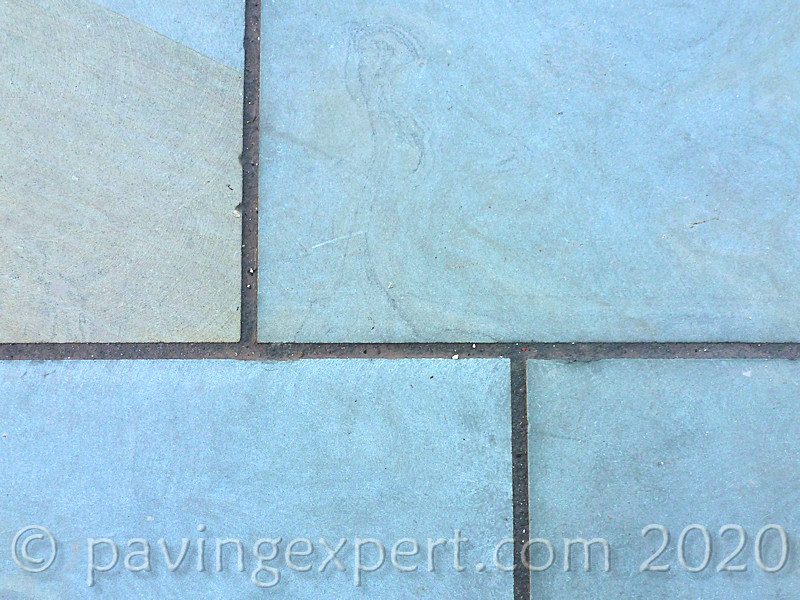
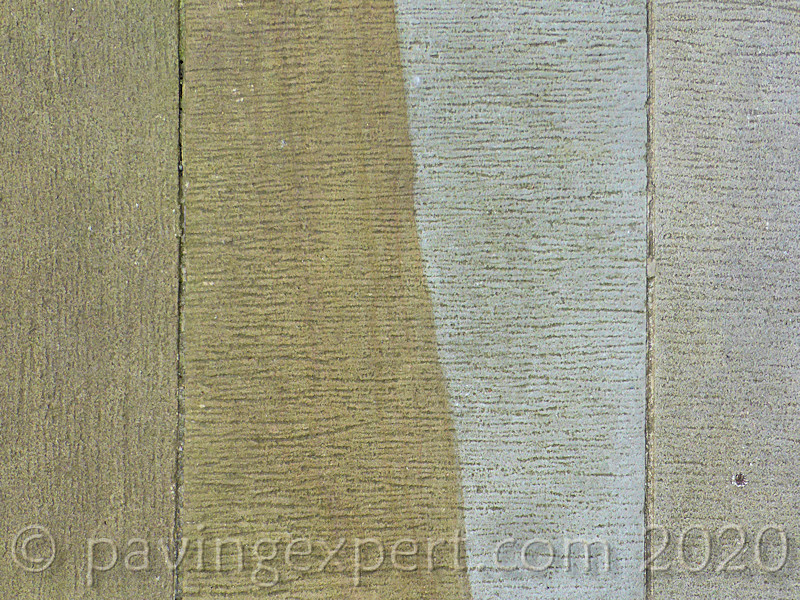
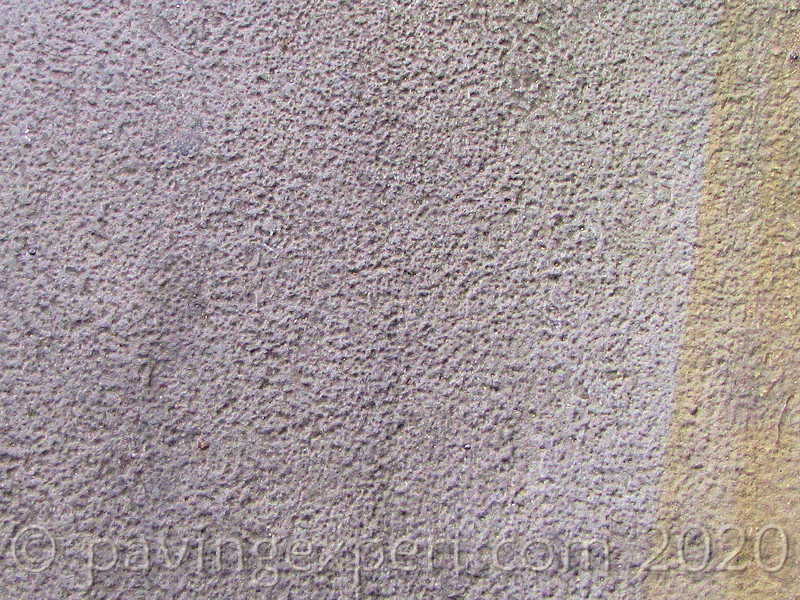
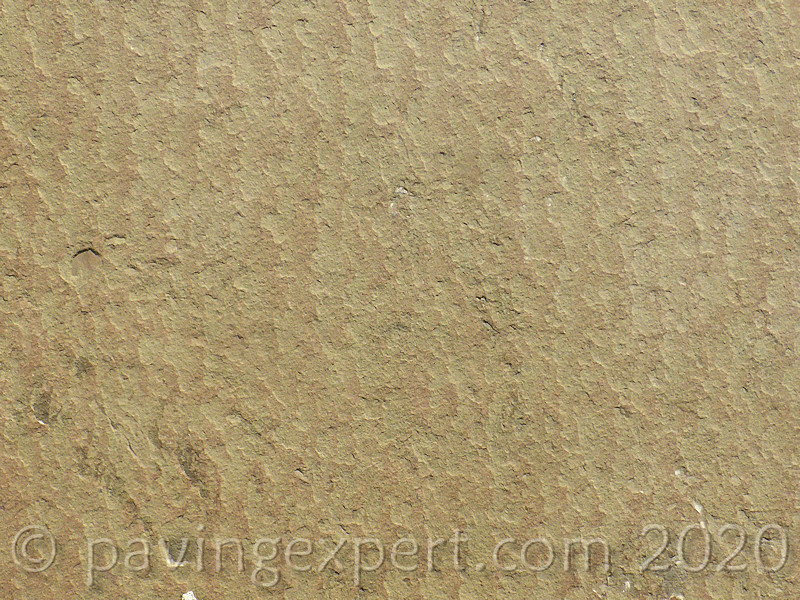
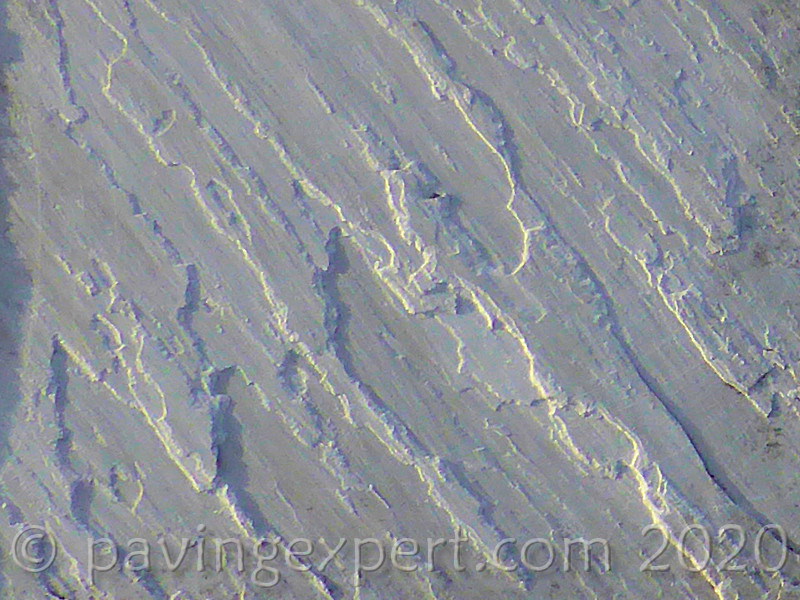
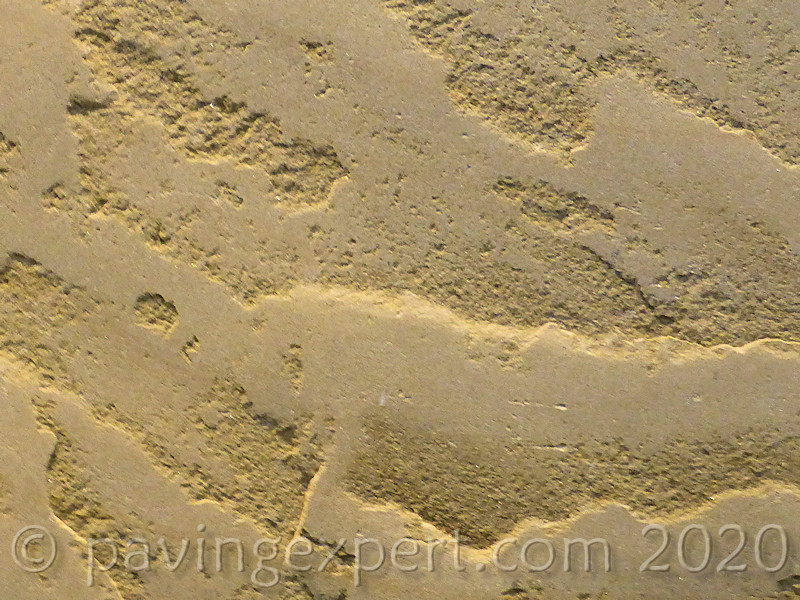
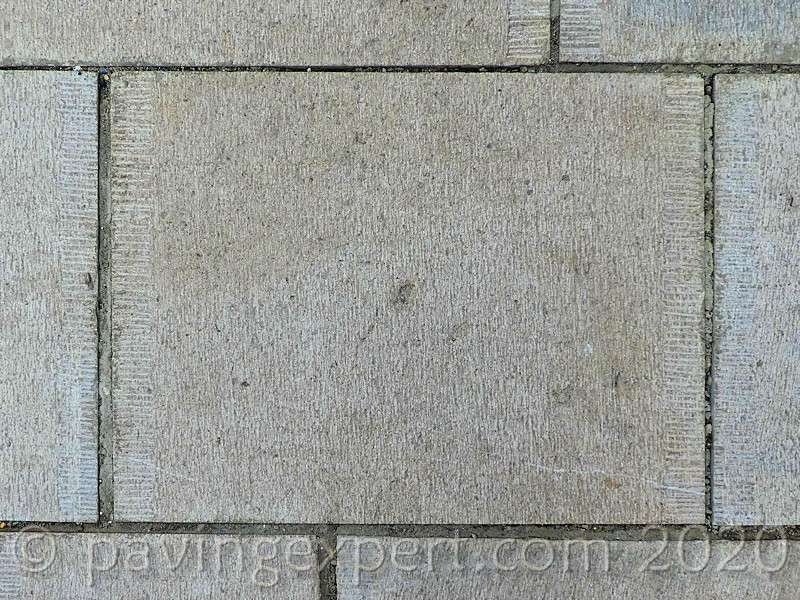
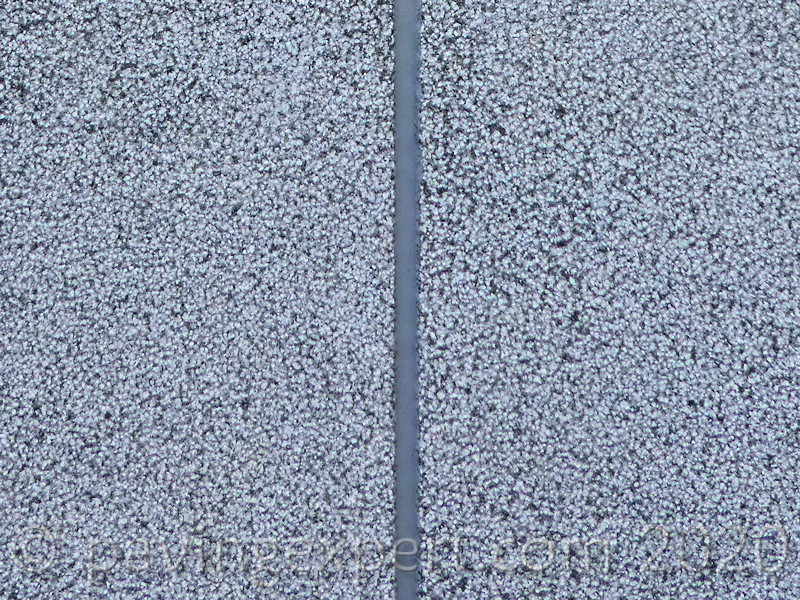
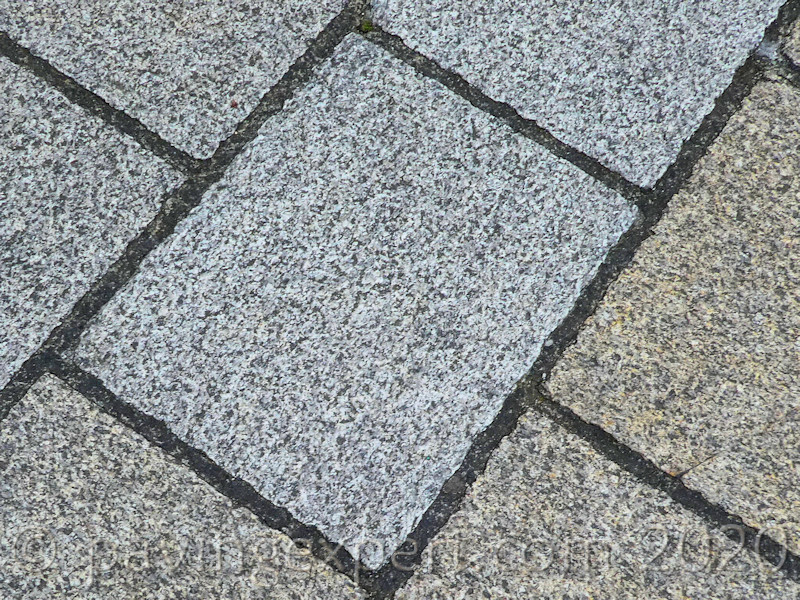
Fine Pick Textured Wicklow Granite
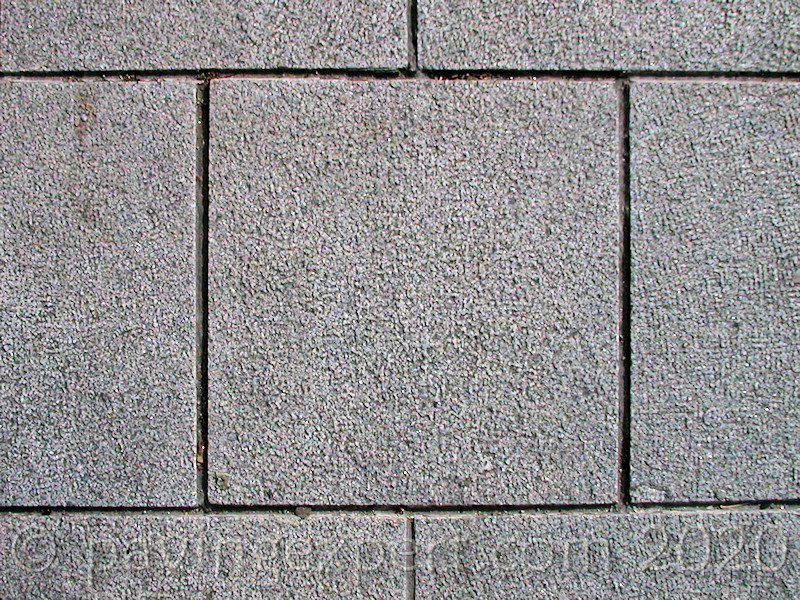
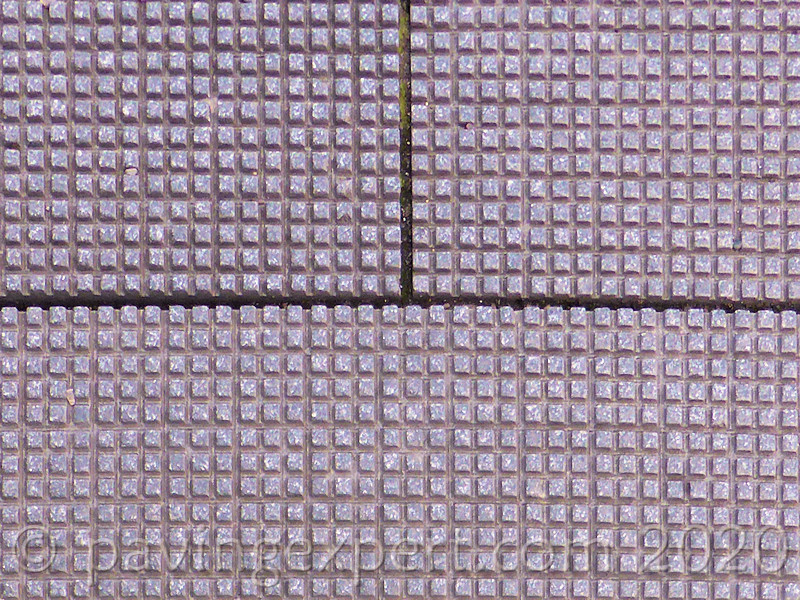
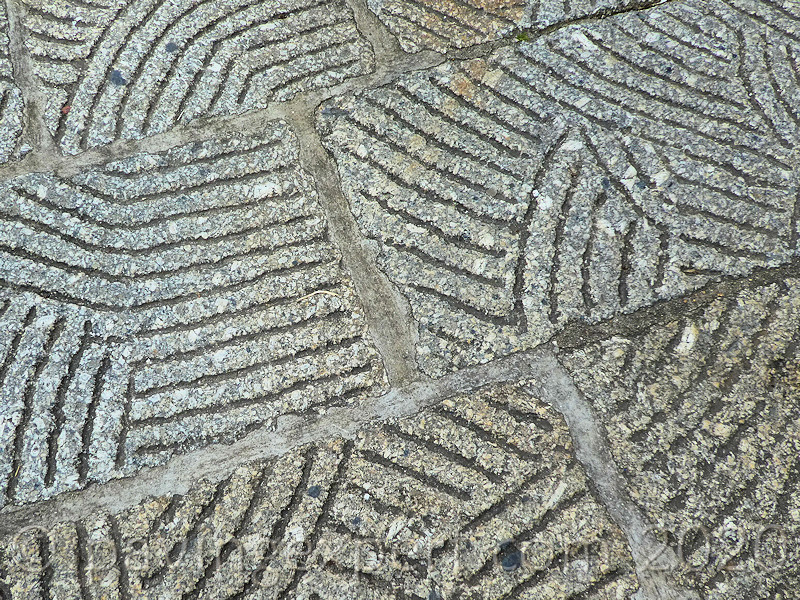
Special consideration should be given to choice of finish, with attention given to planned use of the paving as well as aesthetic and/or design considerations. Honed, sawn or other smooth finishes may be better suited for projects with heavy pedestrian usage or where shoppers use trolleys. Heavily textured finishes, such as chiselled or punched, are better suited for projects where additional traction is important, or where a definite 'look' is required.

New paving is nearly always sold by area, rather than by weight, which makes ordering very simple. It tends to be supplied in standard course widths based on 150mm modules, so we see lots of new paving that is 300mm, 450mm or 600mm in width and of variable length. Most manufacturers are happy to supply specific lengths or to cut non-standard widths, if they are required.
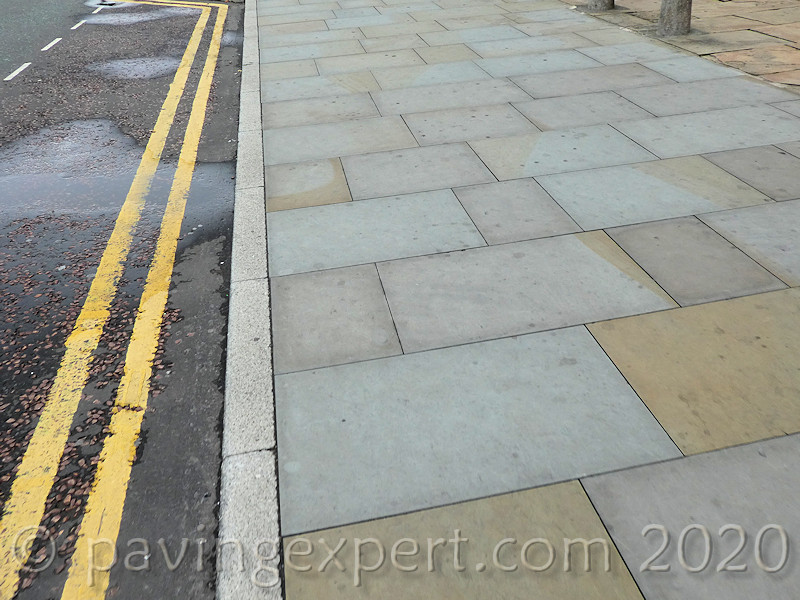
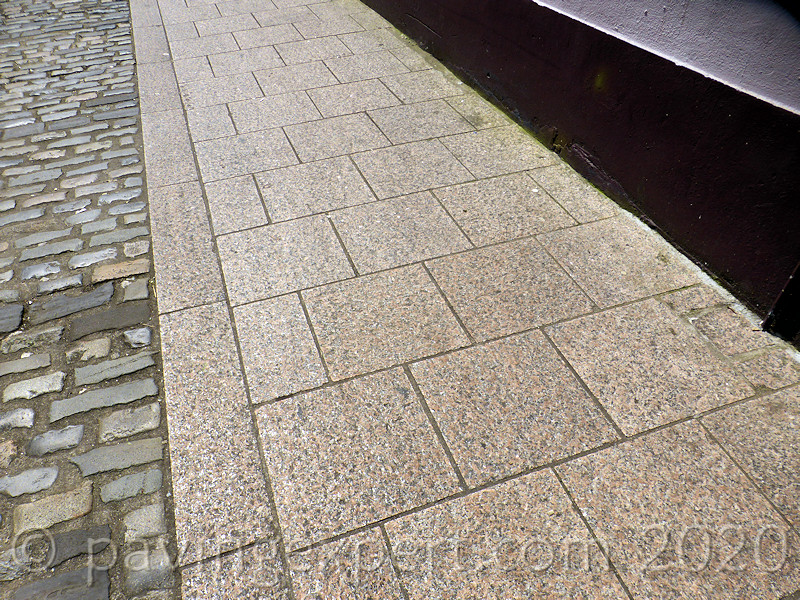
Although stone paving is considerably more expensive than the concrete alternatives, or the increasingly popular block paving, it does have a cachet that no other form of paving can offer. It has an indefinite life-span and a high re-sale value should it ever need to be replaced.
Prices are variable, depending on type of stone, source, finish, thickness etc., but expect to pay £30-£70 plus VAT per square metre for a typical 30-50mm thick flagstone.
One advantage of buying new is that manufacturers are generally delighted to work with the designer to apply their not inconsiderable skills and technologies to supply unique and, in some cases, absolutely stunning paving. Special shapes can be cut to order, and special finishes applied to the new paving. Many of the paving manufacturers are also able to supply matching or complementary hard-landscaping items, such as steps, plinths, copings, seating, etc.
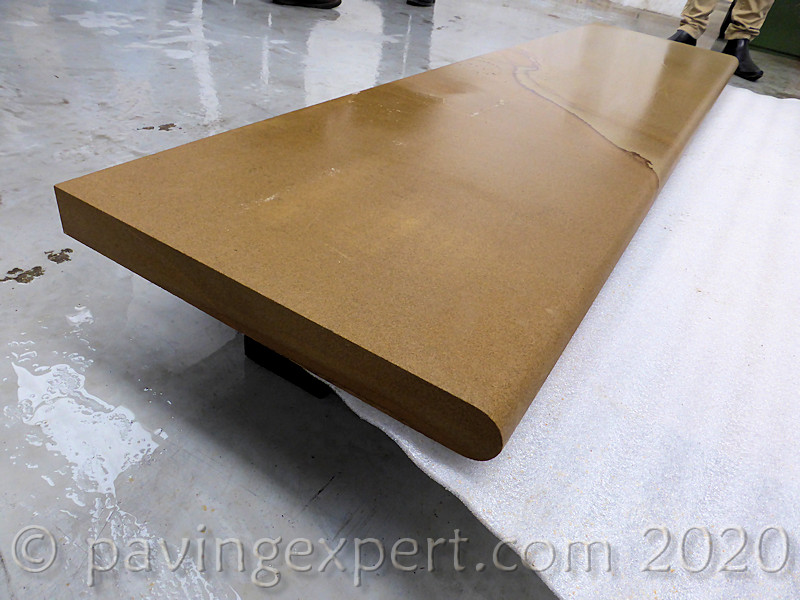
Buying reclaimed
There is a thriving market in reclaimed paving, and as with any business, there are honest dealers and there are rogues. The rogues tend not to stay in business for very long and often do not have a yard or other business premises. Be very wary of any dealer who has only a mobile telephone number or who insists on doing business in cash from the back of a lorry.
Remember, the thicker the flag, the less you get per tonne! Always try to buy by area, not by weight. If you buy reclaimed flags by weight, the less scrupulous dealers will probably slip in a couple of monster 175mm thick ones (known in the trade as 'ball-breakers'!) that no-one else would take.
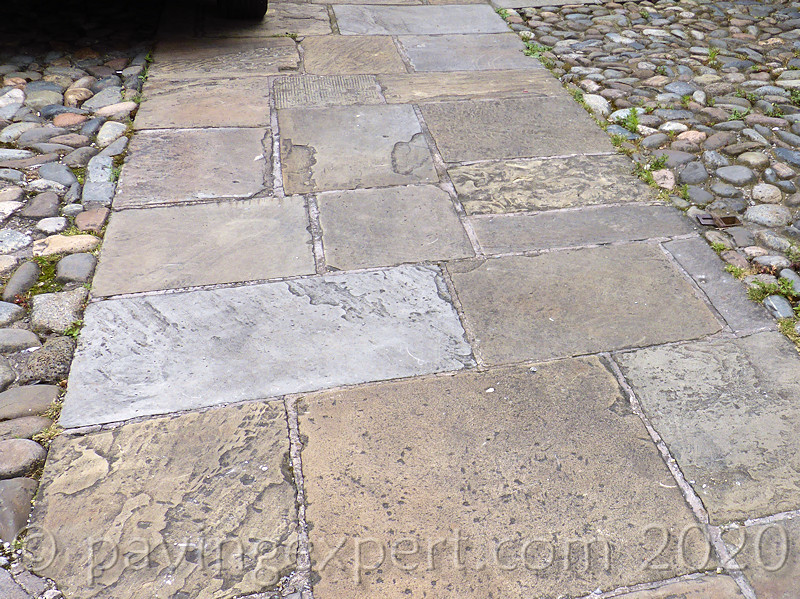
There is a great deal of variation in the quality of reclaimed paving. While some is as good as the day it was originally laid, albeit with a bit more character, a significant proportion of what is offered for sale is of dubious quality. In particular, look out for...
- Flaky paving - some flagstones cleave along the bedding planes over time
- Missing corners - can be tidied up by re-dressing the flag but extra work involved.
- Paint/Oil/Mortar stains - can be difficult to remove; see Stains page
- Roofing Tiles sold as paving flags - generally these are less than 25mm thick
- Non-rectilinear units - some flagstones may be tapered or trapezoidal in shape
- Lanolin - flags from old woollen mills contain high levels of nastikemmickles
As with new stone paving, there is a range of finishes found on reclaimed stone paving, especially with Yorkstone Paving.
Often, the finish is partly worn, which is only to be expected, but it is worth examining the type of finish if purchasing for a prestige project, where all units should have a similar appearance. It is also worth noting that reclaimed paving with a smooth finish usually commands a higher resale price than rough-faced.
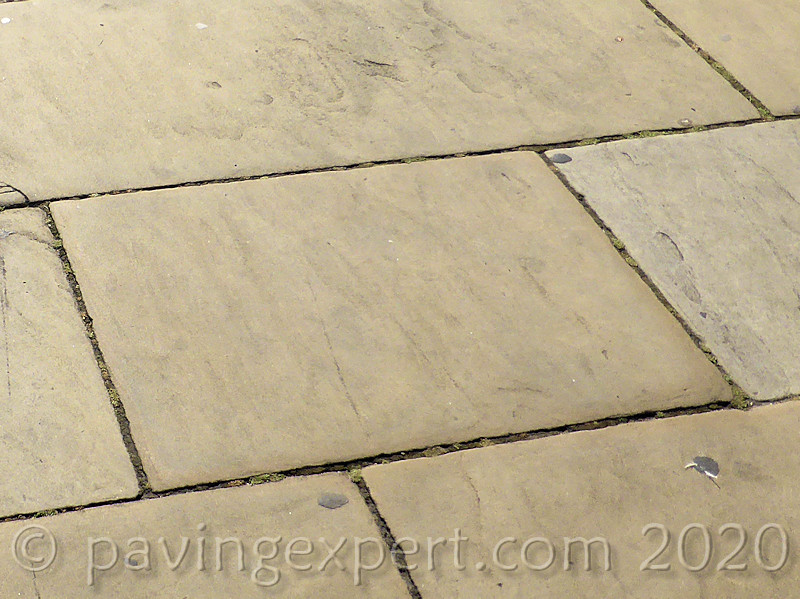
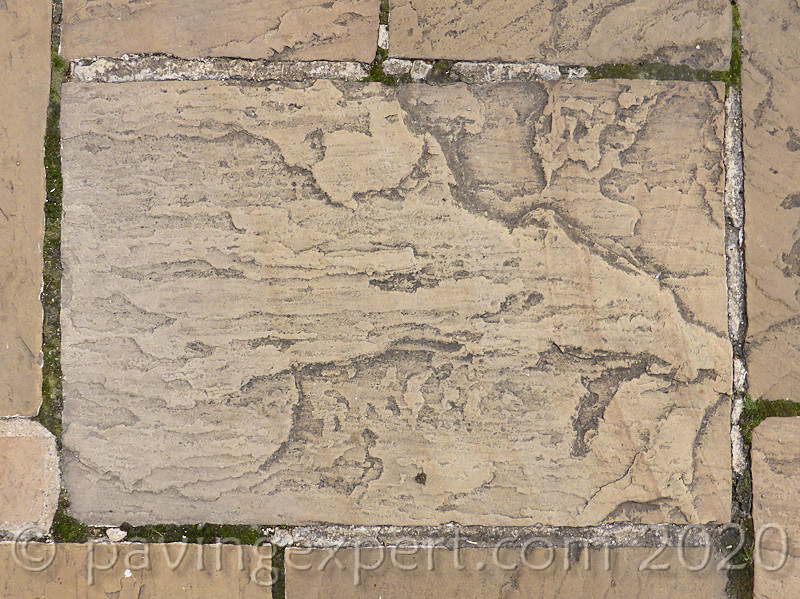
The pictures opposite illustrate the most commonly encountered finishes on reclaimed Yorkstone Paving, but the limitations of web photography can't fully convey the highly uneven surface of the rough-faced 'Rossendale' type: this paving can be a nightmare, not only for pedestrians, but also for patio furniture.
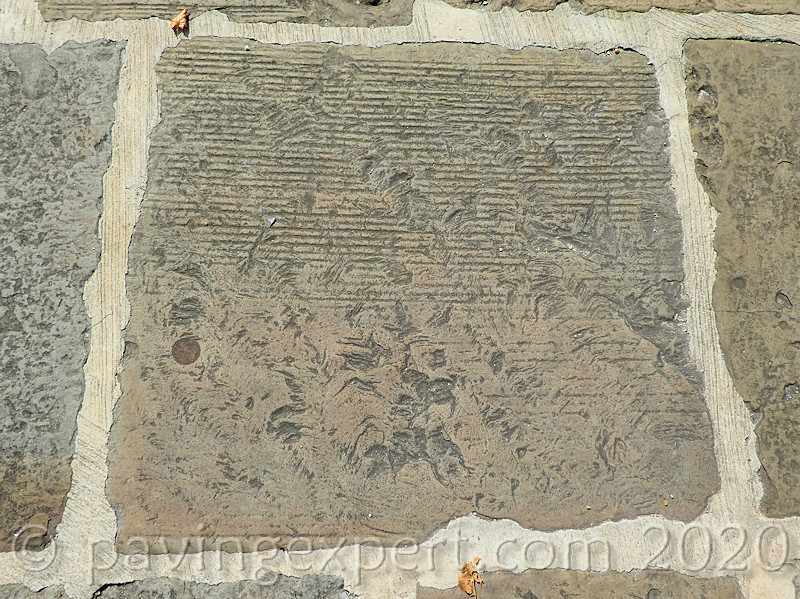

These textures are not definitive, nor are they the only ones to be found. Every possible variation between these is almost certain to be included in almost any batch of salvaged or reclaimed yorkstone.
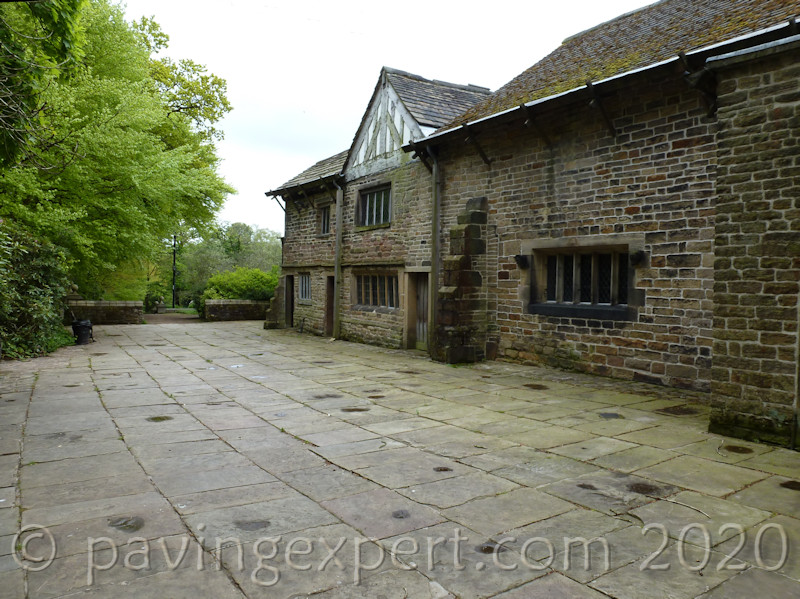
Another consideration when buying reclaimed stone paving is the course width. Most stone paving was, and still is, produced to standard widths to enable simple coursing of the flags. Quite often, we find that reclaimed paving has a course width that is a multiple of a 3" module, so we see lots of paving that is 18", 21", 24", 27", 30", 30" or 36" in width, with variable lengths. This feature can be very useful when buying paving for a large area that will be laid to a course pattern, as most good dealers will sort their stocks according to course width, if asked to do so.
The flip-side of this coin, of course, is that it can be tricky to develop good-looking random layouts with some reclaimed paving.
One of the most significant difficulties when working with the reclaimed flagstones is the variation in thickness. Although dealers often sort their flagstones into, say, 30mm thick, 50mm thick, etc., there is a generous degree of tolerance in these figures, so that what is classed as 50mm thick can be anything between 40mm and 60mm. Obviously, this precludes the use of a screeded bed for laying the flagstones, and it can be trial and error to achieve the right individual bed for each flag.
Reclaimed ("second-hand") stone pavings command a price of £15 - £90 per square metre, or more. The better the quality, the higher the price. This compares favourably with the cost of new stone flags and gives the better quality wet-cast concrete reproduction patio flags a run for their money. However, quality is everything and all reclaimed paving should be thoroughly vetted before purchase.
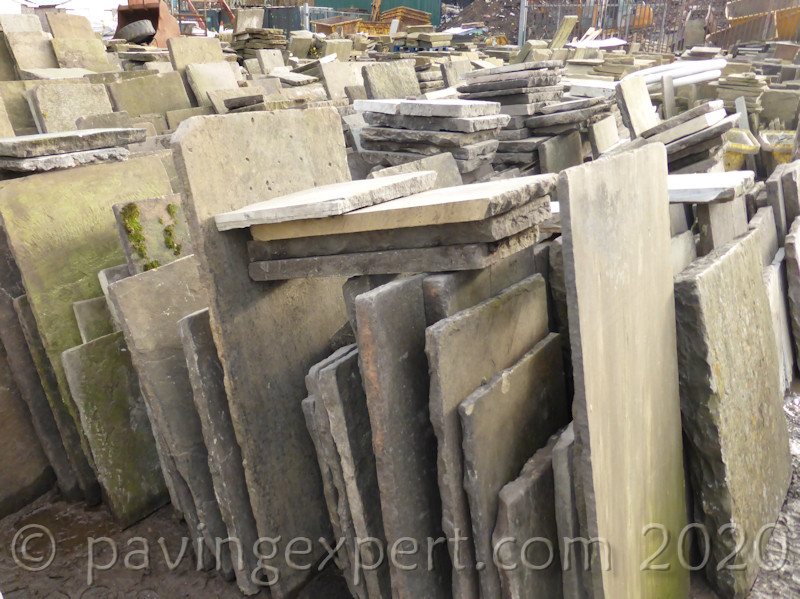

Crazy Paving
The term "crazy paving" refers to the 'crazed' appearance of the finished surface, although it could equally apply to the notion held by some folk that it is a cheap or easy form of paving. Far too often, it is undertaken as an allegedly simple alternative to more traditional paving, or because the stone itself is cheaper than rectangular units, yet, from a contractor's point of view, it costs more in terms of labour to lay a given area of crazy paving than it does for 'normal' paving.
Many types of stone paving can be obtained in non-rectangular shapes, which is a trade term for broken bits and pieces. We refer to this type of stone paving as "random rubble" and it can be laid as crazy paving to good effect. However, as hinted at above, there is a lot of intensive work involved in getting crazy paving to look good.
The rubble has to be sorted, and the best or most appropriate pieces selected and laid, one at a time. Each individual piece needs to be kept as tight to its neighbours as is possible. Good crazy paving minimises the amount of mortar or jointing visible at the finished surface. Often, to achieve this, the rubble has to be trimmed or shaped with hand tools to get a reasonable fit and avoid those unsightly 100mm wide dollops of glaring mortar.
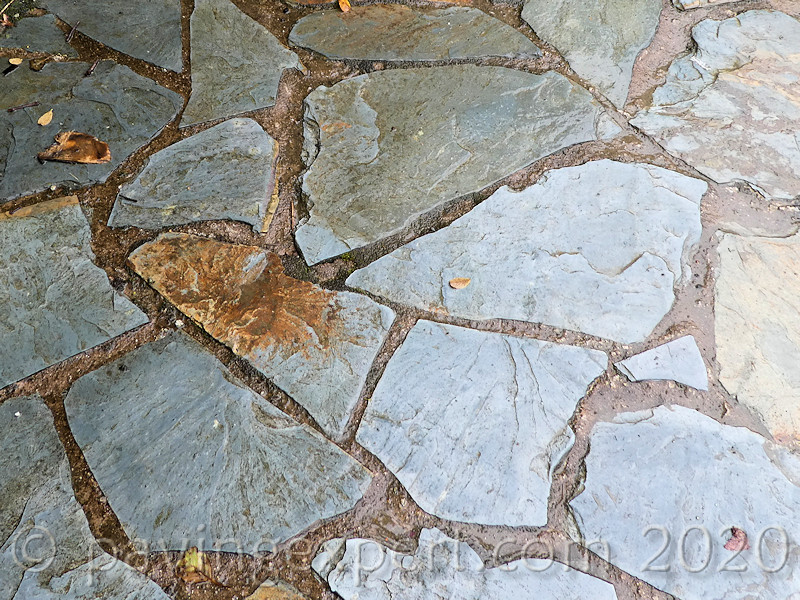
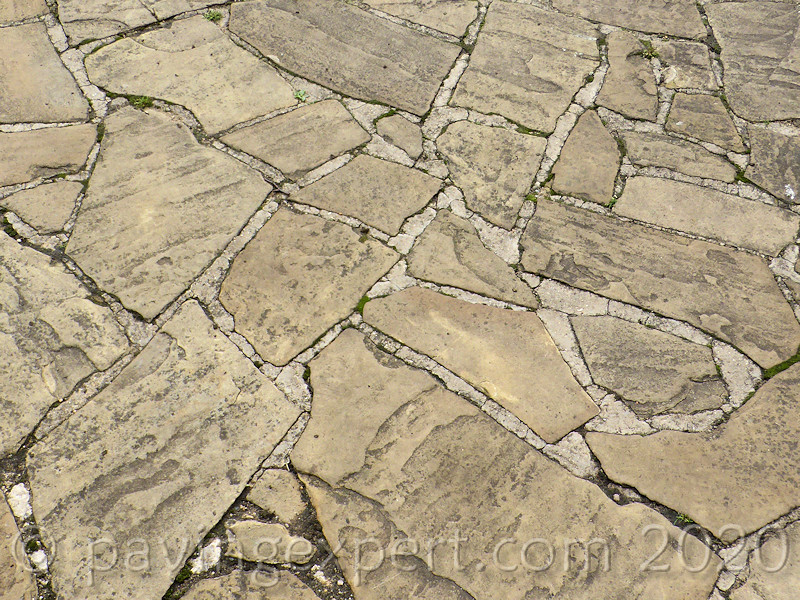
However, it is a traditional form of paving in some parts of the country, notably those areas where workable stone is at a premium, and when done carefully, it can be visually stunning. It does, however, need to be laid on a full bed of mortar or concrete, rather than clean sand, and the mortar pointing is absolutely critical.
In terms of cost, random rubble suitable for crazy paving can be found for as little as £10 per square metre, although prices in the range £20 to £50 per square metre (all plus VAT when applicable) are more common.
Construction
There are usually three layers to stone paths and patios; the flags themselves, the bedding layer, and the sub-base, although a limited number of projects may not require a sub-base.
Most stone flags may be laid onto a bed of grit sand or mortar, but thinner units, such as some of the slates, need to be laid on a full mortar or concrete bed. Pavements that will experience vehicle overrun, such as drives and forecourts , must have a sub-base suitable for the prevailing conditions, or may use a concrete sub-base with the flagstones laid directly onto the concrete before it sets. This method allows the thinner flags to be used for driveway purposes.
- See Laying Flags page for fuller details on how to lay stone flags.
- Refer to the Flagged Driveways page for guidance on using stone flags with vehicles
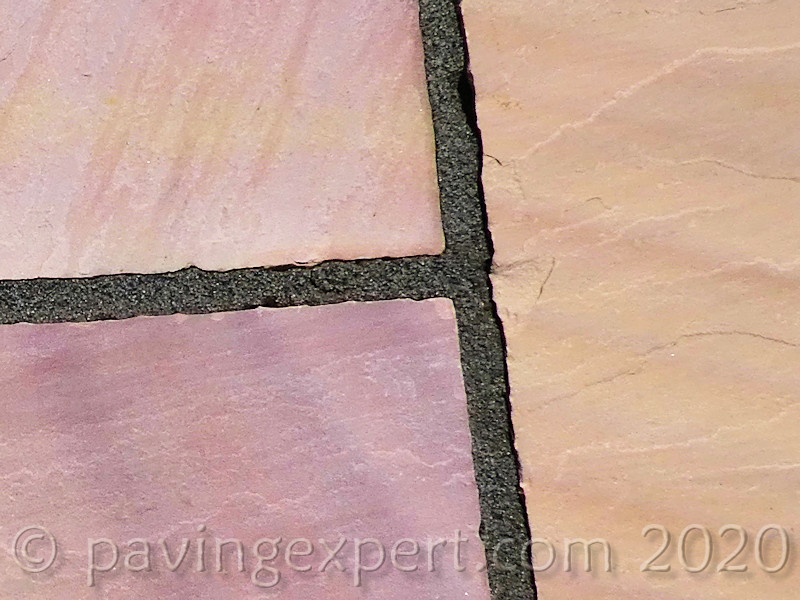
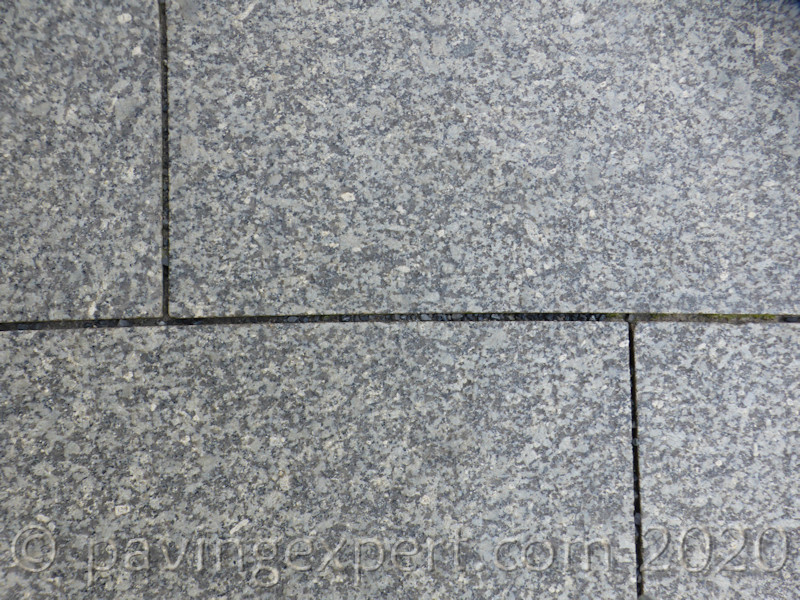
Although most stone paving is laid with pointed mortar joints , the units with sawn edges are sometimes laid close jointed with 3-6mm wide dry sand joints.
Butt-jointing (flags laid tight against their neighbours) is never normally recommended, as the tight joints can often cause the stone to spall on the top surface, although where some eejit architect or designer insists on using it, the risk of damage can be largely avoided by using flags with chamfered arisses.
It has already been mentioned that stone flags are available in almost any plan size imaginable, and it is this variety of sizes that allows custom patterns and random layouts to be laid with the stone. Random layouts are extremely useful with reclaimed flags where there is less chance of stipulating exact widths to allow coursed work to be laid without having to trim most of the flags.
By choosing flag sizes carefully, it is possible to create simple but attractive patterns, such as this herringbone layout created with just one size of linear aspect (plank) flag, 600mm x 150mm.
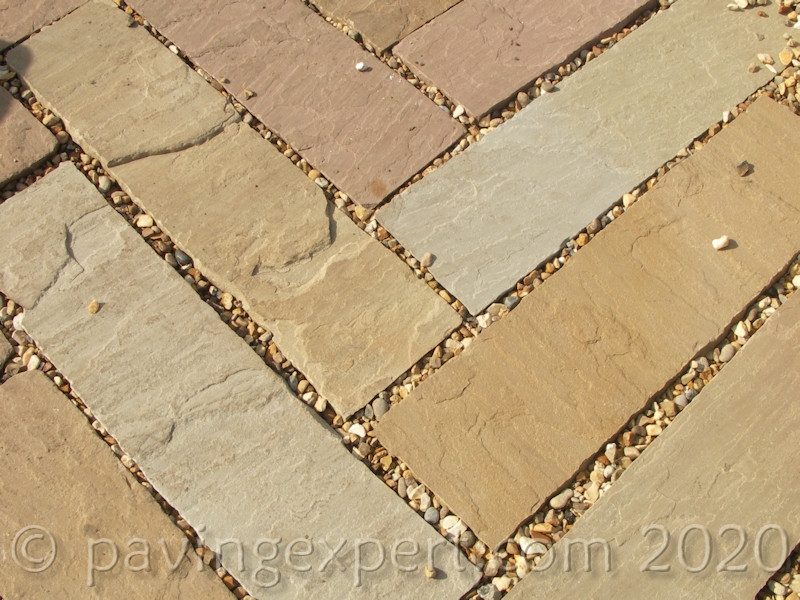
However, certain layouts, such as streetworks and footpaths, look much more effective when laid in transverse courses (courses that run across the direction of travel) or longitudinal courses (running in the direction of travel), and it is generally only larger areas such as forecourts and patios, that are laid as a random layout.
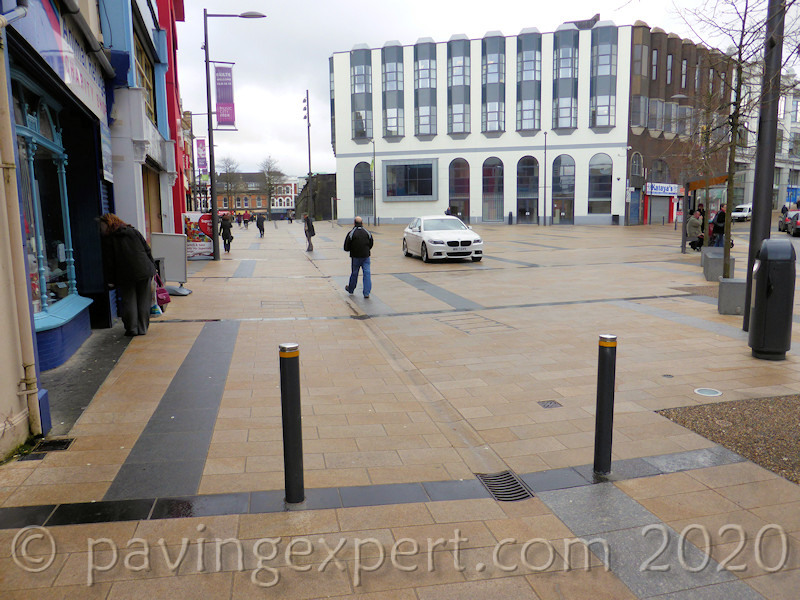
There is also a tradition of prestigious civic paving projects using natural stone in highly specialised, often unique patterns that require the stone to be specifically cut, often to non-rectangular shapes. This custom perhaps reached its peak during the Victorian and Edwardian eras, when streetmasonry was an indicator of civic pride and prosperity, but there is a definite revival taking place as developers and architects re-discover the vital role played by the built environment in creating our everyday culture.
It was noted earlier that reclaimed stone flags usually have variable thicknesses and therefore need to be individually bedded, whereas new stone can be bought in specified thicknesses. Some flags are exceptionally heavy and may require two or more flaggers to handle them safely. The really big stuff, such as those units of 1800mm or more, are usually manoeuvred into position with the aid of crow bars or slung from the hydraulic arm of JCB.
Construction Diagram
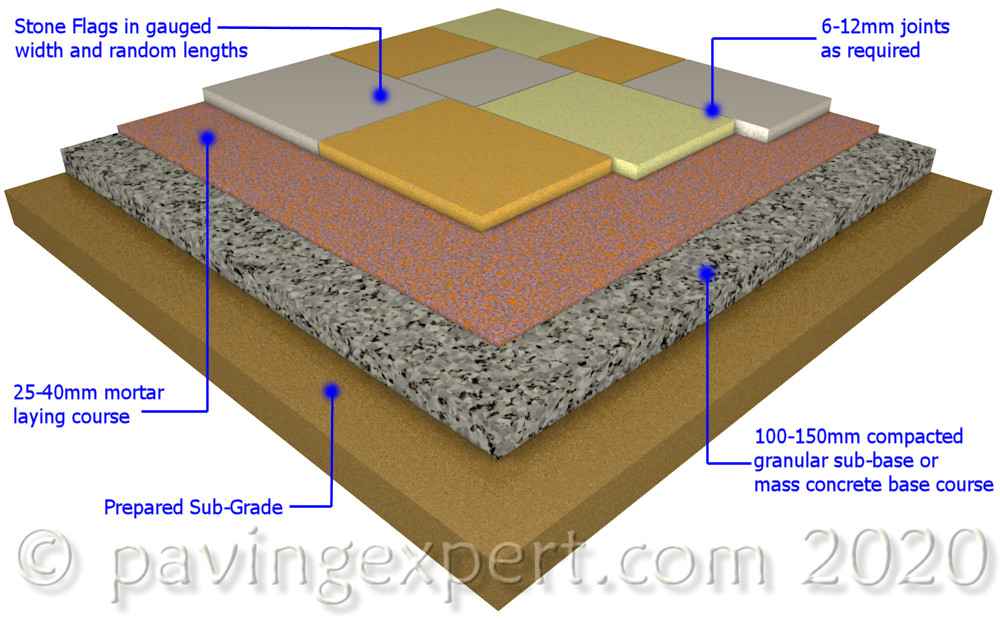
Coverage
Coverage rates are very variable, given the random nature of the stone paving, and the inconsistency in thickness. New paving is normally sold by area, except in specific circumstances where large areas of known dimensions are required. Some dealers still sell reclaimed paving by weight, which can lead to arguments and even fisticuffs when a disgruntled buyer finds 20 tonnes of 200mm thick paving dumped on their job!
Most stone used for paving has a density of between 2,200 and 3,000 kg per cubic metre. So, for guidance only....
- 1 tonne 25mm thick slate flagstones covers approx 15m² - (2,800Kg/m³)
- 1 tonne 50mm thick sandstone flags covers approx 8.5m² - (2,400Kg/m³)
- 1 tonne 75mm thick sand stone flags covers approx. 5.5m² - (2,400Kg/m³)
- 1 tonne 50mm thick granite flagstones covers approx 9.5m² - (2,600Kg/m³)
- 1 tonne 100mm thick granite flagstones covers approx 4.5m² - (2,600Kg/m³)
Pros and Cons
- Quite expensive, when compared to concrete pavings.
- Well-laid stone paving is both time consuming and labour intensive.
- With reclaimed flags, just arranging them into a reasonable pattern can be like solving a jigsaw.
- Good quality stone flags, well laid and in the right setting, truly are a joy to the eye - very natural and organic looking.
- If employing a paving company to do this sort of work, insist on seeing previous work in the same materials, as the skills required to lay stone paving are not the same as those used for block paving.
- Minimal risk of colour fade as there is with coloured concrete products
- Must be properly drained to gullies or other suitable drainage points.
For easier and cheaper alternative to yorkstone flags, take a look at some of the very good concrete copies that have become available recently or see the decorative paving section of this site.
Until a few years ago, all of the concrete copies were appallingly unconvincing, but the newer products, such as "Old Lancashire" by Westminster Stone and "Millstone" by Stonemarket , are exceptional - have a look at the photograph opposite - real or copies?
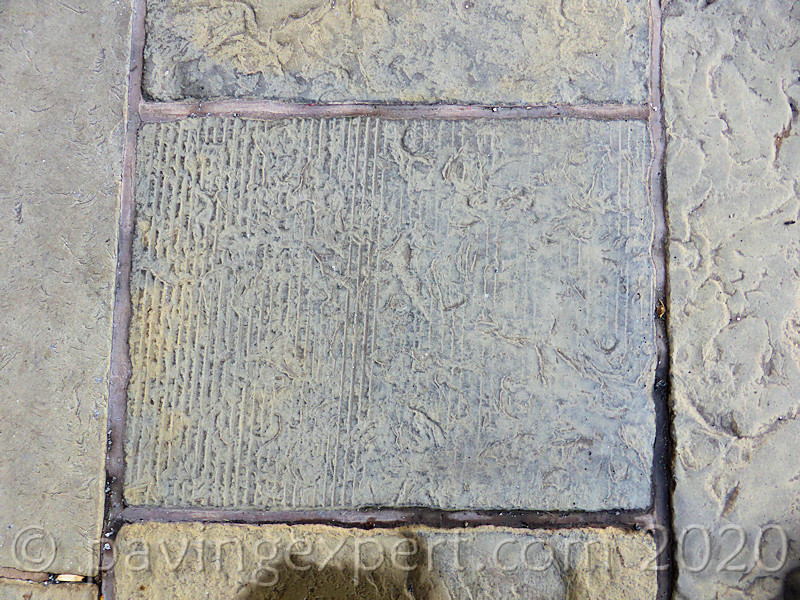
Maintenance
Natural stone paving is relatively low maintenance once laid. The pointing is the weakest element and may need to be replaced after a number of years.
Sweep regularly with a stiff brush to remove dust and detritus. There is a tendency for algae, lichens and mosses to colonise stone paving that is permanently shaded and/or damp. This can be safely removed by a pressure washer or, we are told, by swilling the area with Jeyes Fluid to kill the algae, which can then be swept away after a couple of days. They should last longer than any of us!
Guide Prices:
There are more types of stone now available in Britain and Ireland than has ever previously been the case, and along with so many different types of stone, we have differing products, such as flags, setts, linear paving, pavers and more, all of which require several different installation methodologies.
When all this is combined with the huge range of regional variation in pricing that occurs, from the sky-high costs of working in London to the highly-competitive rates charged in the conurbations of northern England, and then the problems of obtaining materials in The Highlands and Islands or Scotland, or parts of Western Ireland, then the reliability of any price guide is called into question.
Consequently, the price guide that used to be provided has had to be withdrawn. We recommend you obtain at least three quotes from suitably experienced and established local paving specialists (rather than jobbing builders or all-rounder landscapers) to acquire a good idea of what the local rates should be.
